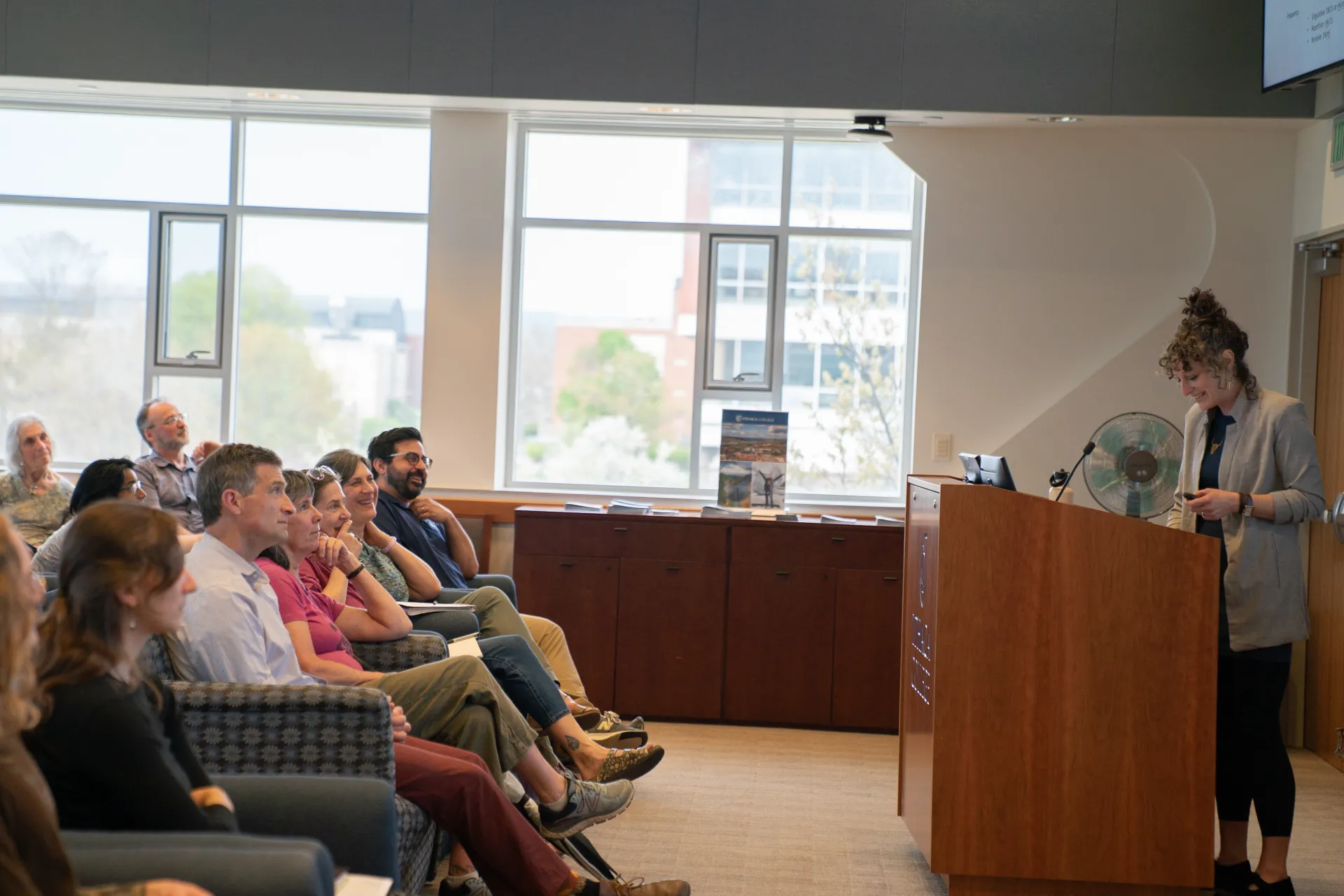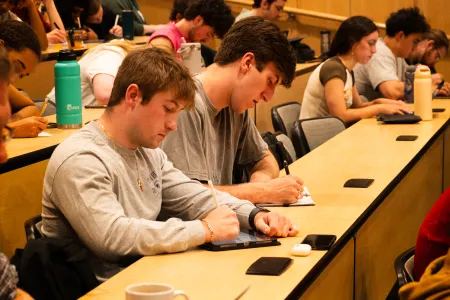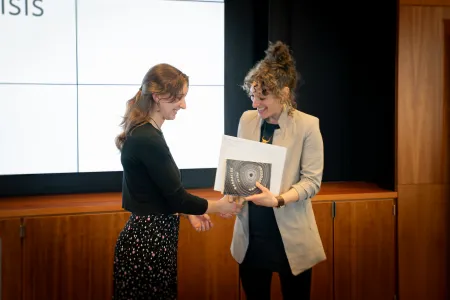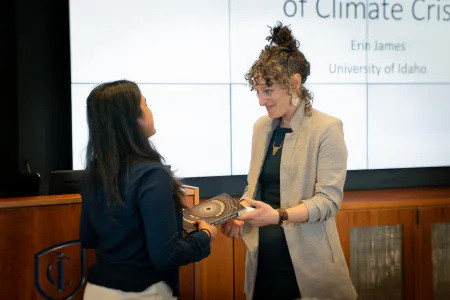This week, Associate Professor of Physics and Astronomy Eric Leibensperger addressed a lecture hall filled with students from three combined classes with a screen filled with news stories related to climate change in just the last five days. The message was, “the narrative is moving quickly, change is happening.” What is that narrative? Who and where does it come from? What is it telling us?
That was the topic of this year’s School of Humanities and Science’s C.P. Snow Lecture Series. Erin James, University of Idaho professor of English, co-founder of the Confluence Lab, and author of the Narrative in the Anthropocene visited IC’s campus to lead students through the deep reveal of the narrative in the Earth and the pervasive tools we have in equal complements of the arts, humanities and science. In fact, she has a word for it: Syndisciplinary.



